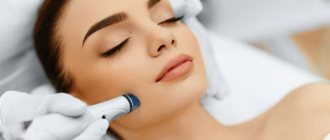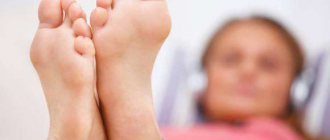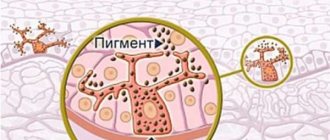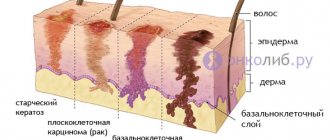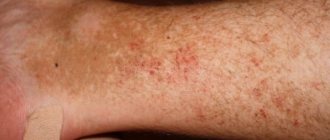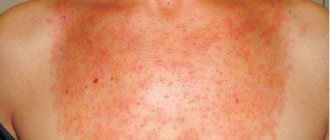Peeling skin is the excessive shedding of dead epidermal cells. The condition of the skin is often a reflection of hygiene and care. Using excessively hot water when washing, using alcohol-based lotions and soap causes peeling of the skin.
Signs of peeling skin are known to many women, and this problem does not escape men either. However, women pay much more daily attention to their appearance, which is why they worry more about flaking skin. In addition, men's sebaceous glands function differently than women's. This is why men are less likely to experience these manifestations.
All skin types can be affected by peeling skin: oily skin, dry skin and combination skin. But, first of all, dry skin types are susceptible to peeling.
Causes of peeling skin
The main factor that influences the condition of the skin is the external environment, although peeling of the skin is often caused by serious dermatological diseases, which are considered common these days.
Signs of peeling skin are: redness of specific areas on the skin, pain when rubbing, periodic or constant itching. Cracks may occur. The skin becomes rough to the touch and loses its usual smoothness and elasticity.
In addition to the reasons that cause cosmetic defects of the skin, caused by provoking environmental conditions or poor care of the skin, there may be more serious reasons. Many dermatological diseases are also combined with skin peeling.
Ichthyosis is considered a hereditary disease, and the cause of its occurrence is still not understood. With ichthyosis, the skin peels off, and itching may occur. The color of the skin becomes dirty gray, and tiny scales appear. Their appearance is due to the symptoms of the clinical picture of ichthyosis. It may be white, pearlescent, xeroderma, shiny ichthyosis and others. The skin of a person who suffers from ichthyosis is severely inflamed and does not tolerate chemical irritants, for example, soap. It increases peeling of the skin and may cause dermatitis.
Other diseases that cause peeling of the skin include: psoriasis, seborrheic dermatitis, erythema sicca, diseases of the internal organs, systemic lupus erythematosus, pityriasis rosea, fungal infections, scarlet fever, secondary syphilis.
With a disease such as dominant ichthyosis, the scales are localized and appear in the shape of a rectangle.
Peeling skin usually appears suddenly. With this course of the disease, the main cause may be its dryness. That is, the deep layers of the epidermis lack moisture. Dry skin is caused by alcohol lotions and tonics, weather conditions, peelings and some systemic diseases.
With hypovitaminosis, peeling of the skin is also observed. With a deficiency of vitamin B2, the forehead, nose, and ears begin to peel off. Other signs of a lack of this vitamin: cracks on the lips and in the corners of the mouth, the color of the tongue is purple.
With a lack of vitamin A, peeling also appears on the skin. The addition of pustules and dryness of the mucous membrane of the eyes may be observed. Also a characteristic symptom of vitamin A deficiency is “night blindness” - a sharp decrease in vision at night.
Hormonal levels also play a role in skin condition. Of particular importance are: the level of gonadal hormones and the level of thyroid hormones. If there is a lack of hormones or if they are disrupted, the skin immediately reacts with dryness, decreased elasticity and peeling. An example of this is a disease called hypothyroidism.
Women during menopause experience a significant deterioration in the condition of the skin. Peeling and wrinkles appear. Flabbiness also appears, which is associated with the level of sex hormones, especially estrogen.
Dermatitis also takes a certain place among the causes of skin peeling. For example: contact dermatitis, psoriasis, allergic dermatitis, seborrheic and atopic dermatitis, etc. In this case, the cause of skin peeling is the increased accumulation and formation of dead skin cells and scales. As a result, a layer of dead cells appears on the skin, which causes peeling.
Peeling skin on the face
Among women, peeling skin on the face is considered a fairly common problem. Men, as a rule, do not present symptoms for this reason. This is explained by the fact that the work of the sebaceous glands in men is different from that of women. From a young age, you need to properly care for and monitor the condition of the skin on your face.
Peeling facial skin occurs due to dry skin, which can be caused by climate changes. Excessive or improper facial skin care (using toners, scrubs and lotions) can lead to dryness and later flaking of the skin. It is considered unacceptable to wash your face with soap or products containing alkali.
In women with sensitive skin on the face, peeling occurs due to excessive rubbing of the skin after washing, causing damage. To prevent injury to the skin on the face, after washing, remove any remaining moisture from the face using blotting movements.
Vitamin deficiency can also cause peeling skin on the face. It can occur during seasonal periods. Winter vitamin deficiency can be prevented by using fat-based nutritional cream, multivitamin supplements, and eating vegetables and fruits.
Peeling of the skin on the face, in the form of an allergic reaction, can be provoked by certain chemicals contained in the composition of cosmetic washes. Typically, lanolinic acid and lanolin itself are the strongest allergens. In addition, flowering plants and food can also trigger allergies, and subsequently peeling of the skin on the face.
Since skin dehydration is considered the main cause of dryness and flaking of the skin, it is important to eliminate various negative factors that provoke the occurrence of this problem. That is, it is necessary to stop using soap to wash your face and replace it with delicate alcohol-free cleansers with a hypoallergenic composition.
If it is not possible to use such products to wash your face, then you should use soaps that contain cream or oil with a moisturizing effect. After washing your face, you need to use a moisturizer to treat it, as it prevents excessive drying of the skin. You should also avoid the use of alcohol-containing products for peeling skin on the face. In addition, it is important to use a cream with a protective effect that suits the time of year. But you must remember that you can use it no later than half an hour before going outside.
Peeling of the skin of the eyelids can be caused by a variety of reasons: from a lack of micro- and macroelements in the body, moisture and allergies, to excessive dryness of the entire skin. Decorative cosmetics that are incorrectly selected and the use of soap can lead to dryness and flaking of the skin on the eyelids.
Trichinosis, a parasitic disease caused by worms, can also lead to peeling of the eyelid skin. At the same time, peeling of the skin of the eyelids is considered a reliable sign of this terrible disease.
Eyelash mites can also be another provoking factor. Peeling of the eyelid skin can also be caused by demodicosis, which is usually combined with redness of the eyelid skin and loss of eyelashes.
Treatment at home
Treatment should begin by removing the keratinized, flaky layer. A soft scrub will help with this. You can buy it in a store or make it yourself.
When purchasing, you need to pay attention to the purpose of the scrub - it should be for sensitive skin . Various gommages and rolls are also suitable. They do not injure the skin, and dead cells are removed gently and delicately.
At home, a scrub can be made from oatmeal by grinding it in a coffee grinder.
A cream or ointment that contains hydrocortisone, but not more than 0.5%, helps a lot. You can use it without a doctor’s prescription for 2 weeks, as it is a hormonal drug. Longer - only under the supervision of a specialist.
Cream with dexpanthenol (Panthenol, Bepanten) also copes well with irritation and peeling. It must be used according to the instructions.
Peeling of the scalp
Flaky scalp can be caused by a number of reasons.
The choice of shampoo for washing your hair is of great importance when it comes not only to washing your hair, but also to proper care of your scalp. An incorrectly selected shampoo often leads to dandruff and flaking of the scalp.
It is worth choosing shampoos that do not contain lauryl sulfate and all kinds of parabens. These substances provoke peeling, dryness and allergies.
Peeling of the scalp can occur with psoriasis. This disease is caused by a fungus, which provokes the rapid death of scalp cells, their keratinization, and later peeling of the scalp. In this case, you should contact a trichologist or dermatologist to prescribe adequate treatment.
Dandruff itself also contributes to flaking. Moreover, it is of a very protracted and chronic nature. The fact is that the appearance of dandruff is a consequence of an imbalance in the functioning of the glands of the hair follicles. The appearance of dandruff is provoked by frequent changes of shampoos for washing hair, immune diseases (disorders of the thyroid gland, intestinal dysbiosis, etc.), poor ecology of the water used to wash hair, and frequent hair washing itself. The appearance of dandruff is usually accompanied by severe itching of the scalp. But not all patients complain about this. In the treatment of dandruff, washing your hair twice a day and using Sulsen scalp paste 1 and 2% helps a lot. You should not use shampoos with triclosan (for example, Headen Shoulders or Nizoral). The fact is that the scalp can get used to them, after which dandruff can be a constant companion of the patient.
Seborrheic dermatitis also appears to be an important cause of scalp flaking. Its symptoms are the formation of yellow scales and crusts with an oily sheen on its surface. Accompanied by itching and flaking of the scalp and face. Often occurs in children. Seborrheic dermatitis is treated with a specially selected diet and medications in the form of tablets and ointments.
Peeling skin on hands
The first cause of dryness and, as a consequence, peeling of the skin of the hands is a disruption in the functioning of the sebaceous glands, which are responsible for moisturizing it. Factors that provoke peeling of the skin on the hands include: low humidity in the room, household chemicals (dishwashing detergents, washing powders, bleaches), temperature changes (wind, heat, etc.), hypo- and vitamin deficiency, heredity, sugar diabetes, various dermatitis.
There may also be peeling of the skin on the fingers, which can be provoked by the reasons described above, but more often, it indicates a disease of a systemic nature (problems with the liver and gall bladder, diabetes, iron deficiency anemia and intestinal dysbiosis). Also, helminthic infestations can cause peeling of the skin of the fingers, especially in children.
A lack of multivitamins as a cause of peeling skin on the fingers and hands in general can lead to purulent complications and cracks. In this case, preference should be given to taking multivitamin supplements with increased concentrations of vitamins A, C, B, E and a balanced diet.
If peeling of the skin on your hands occurs after using household detergents, you should use gloves when cleaning or washing. In bad weather, it is important to lubricate the skin of your hands with cream; in hot weather, it is important to drink at least 2.5 liters of water per day in addition to liquid meals.
It is necessary to understand the fact that it can be very difficult to get rid of peeling skin on the hands, especially if it is caused by diseases of the internal organs. In this case, it is important to treat the chronic causative disease, which led to peeling of the skin on the hands.
The occurrence of dermatitis also initially leads to peeling of the skin of the hands. This is especially observed with contact dermatitis. Later, inflammation and redness of the skin on the hands occurs. As a rule, peeling of the skin on the fingers and hands due to dermatitis is accompanied by severe itching. In this case, it is imperative to consult with a qualified specialist and find out the cause of dermatitis. Then begin therapy in the form of glucocorticosteroids and antihistamines.
In some cases, flaking skin on the hands can be helped by a massage with nourishing oils, which stimulates blood circulation in the upper layer of the skin. It also helps stimulate the sebaceous glands.
Control measures depending on the cause
Dealing with flaking skin on the cheeks, forehead and chin (these areas most at risk) requires a comprehensive approach. It is worth analyzing nutrition, skin care, and weather conditions over the past few days. Perhaps there were some changes that briefly affected the skin with unpleasant sensations, but quickly passed, and no one paid attention to them the first time. Day after day, irritation accumulated and turned into trouble.
Weather: frost and wind
In windy and frosty weather, sebum secretion slows down significantly, so the skin does not receive sufficient protection and becomes thinner and drier. Oily turns into normal, normal turns into dry. But the latter suffers the most without additional care.
But this happens not only in the winter months. Late autumn is also not the best time. Rain and snow, falling on the skin, turn into ice crystals, which greatly harm the upper layer of the epidermis, damaging it.
Cold wind dries out the dermis, which also causes the skin to peel.
Therefore, in bad weather, both winter and summer, it is very important to additionally protect the skin. Creams should be chosen that are fattier. By covering the top layer of the epidermis with a protective film, they will get rid of unpleasant consequences.
Allergy
The causes of allergic reactions can be both external and internal. In this case, only complete exclusion of the allergen will help get rid of peeling.
What could be the reaction?.
- Food products: you need to remember if you have tried something new, or perhaps a new product has appeared in your diet. Then it’s worth excluding it from the menu for a while and observing the body’s reaction. If the irritation goes away, then that was the reason.
- Cosmetics are often the culprit of unpleasant manifestations on the face. If there is something new in your arsenal, you need to stop using it and see if anything changes.
- Household chemicals: first of all, powders and fabric softeners come under suspicion. Even if they are intended for babies, and the packaging is marked “hypoallergenic”, you should not blindly trust the manufacturers, but rather check.
- Clothes and bed linen. Especially if they are made of synthetic fabrics. Or painted with paint that led to such a reaction. Irritation will appear at the points of contact between the tissue and the skin. Therefore, it is better to choose clothes from natural fabrics, and wash new things before using them.
Excessive grooming
Those who love to take care of themselves often go too far and, instead of a healthy and glowing face, end up with irritated skin with flaking. This can lead to:
- frequent scrubbing, when the upper layer of the epidermis is severely injured;
- cosmetics that are not suitable for your skin type: they will make oily skin even oilier, and dry out dry skin;
- means not according to age;
- too aggressive components in the composition of care products (alcohol).
Damage
With burns and frostbite, a wound, albeit shallow, forms on the skin. It is covered with a crust on top. While healing, the epidermis is restored, and the top layer is rejected, it is unsightly and looks like flaky skin. Additional hydration will help alleviate discomfort and recover faster.
Vitamins and medicines
A lack of vitamins, as well as their excess as a result of their uncontrolled use, is reflected in the appearance.
A lack of vitamins such as A, B, C, E leads to dryness and, as a result, flaking of the skin. Especially in winter, when there are few fruits, vegetables and herbs. Therefore, if everything is in order with your diet, allergens have not been identified or excluded, and creams do not have an effect, you should buy a multivitamin complex at the pharmacy.
However, dryness signals not only a lack of useful microelements, but also their excess. Therefore, if taking a vitamin complex does not improve the appearance of the skin, you should stop taking it.
Medicines also affect appearance. Therefore, while on treatment and noticing a deterioration in the condition of the skin, you need to consult with your doctor about the possibility of changing the medication.
Frequent stress
Stress and “nerves” are the main enemies of female beauty. They accelerate the aging process and destroy skin cells. In a stressful situation, the hormones adrenaline and somatotropin (growth hormone) are produced. The first causes blood to flow from the surface of the skin to the muscles. This leads to pallor, dryness and lethargy of the epidermis. The second causes excessive pigmentation.
If life is quite calm, nutrition and care are at the proper level, and the problem does not disappear, you need to check your hormonal levels by consulting a doctor. Perhaps there are malfunctions in the body or a disease that affects the proper production of hormones.
Genetics
There is no place to hide or escape from it. Inherited dry skin requires regular care. Otherwise, problems are guaranteed.
Skin diseases
All causes of dryness have been checked, irritants have been excluded, but the problem remains to one degree or another? Then all that remains is to make an appointment with a specialist. Perhaps peeling is a manifestation of a skin disease, and specific treatment will be needed. Independent activity will lead to a worsening of the condition.
Peeling skin on legs
Unfortunately, the skin on your feet is also prone to peeling. If a person is concerned about peeling skin on the feet, then it would be a good idea to visit a dermatologist to be examined for a fungal infection. From the very beginning, pain begins in the area affected by the fungus. In this case, you can observe the skin of the legs being covered with small bubbles, especially in the area between the toes, where there is also severe unbearable itching. Later, damage to the nails and nail bed occurs, and peeling of the skin of the feet develops.
Ichthyosis (skin fungus) is considered a contagious disease. It is most likely transmitted through contact transmission (in saunas, baths, when wearing shared shoes). The fungal infection of ichthyosis loves moisture. Symptoms of chronic ichthyosis may include thickening and yellowing of the nail bed, as well as destructibility of the nail. Cracked heels are also classified as chronic ichthyosis, which is always accompanied by dryness and flaking of the skin of the feet. An important point in treatment is the use of antifungal ointments, elimination or cutting of the affected nail, and careful hygiene of the skin of the feet. In advanced cases, oral antifungal drugs (Fluconazole 150 mg three times a week for several months) may be required.
Sometimes there may be peeling of the skin on the legs and thighs, as well as in the calves. The reason for this is severe dry skin. Insufficient fluid intake (less than 1.5 liters per day) also contributes to the development of dry skin. It is necessary to consume at least 2.5 liters of water, and only in its pure form. Also, the cause of peeling skin on the legs in the thigh area may be a thorough peeling procedure or the use of anti-cellulite procedures, which often “dry out” the skin in order to remove excess fluid from it.
It is also worth considering that the accumulation of excess fluid in the tissues, which leads to the development of cellulite, develops due to impaired metabolism and therefore cellulite on the legs should be treated not with massage, but with a properly selected diet with the prescription of a certain type of medication (Hofitol, Essentiale, Wobenzym, etc.).
Diabetes mellitus, as many already know, leads to itching of the skin and flaking. Therefore, peeling skin on the legs may be a consequence of diabetes. You should not neglect going to the doctor if peeling skin on your legs appears, as this can be a dangerous sign, especially in old age, when the risk of its development is several times greater, due to the fact that diabetes mellitus appears due to disturbances in the production of insulin, where the main organ that produces it is the pancreas. Therefore, its prevention and early diagnosis are very important.
Peeling of the skin on the legs also often appears when they sweat. The skin simply softens, peeling begins, and after a change in humidity, peeling appears. Combating sweaty feet is necessary in a comprehensive manner. You should check your hormonal status, because... The cause of sweaty feet may be hyperhidrosis of the feet. After this, it is important to get rid of low-quality shoes and switch to shoes made from natural materials. It is also worth wearing shoes according to the season. The choice of socks or tights is also important in this matter. Cotton will be an ideal option for sweaty feet. Shoe deodorants can only give a temporary effect, but you can try it. Galmanin powder powder, Teymurov paste, 1% formaldehyde solution and foot baths using infusions of oak bark and chamomile can help.
Getting rid of peeling yourself at home
Despite the fact that today specialized stores display a huge selection of cosmetics for professional face and body care, you can still prepare effective products yourself at home without spending a lot of money. So, if your face is flaky, how to quickly get rid of tightness and dry skin on your own?
- Olive face mask for peeling. To prepare such a mask you will need high-quality and always fresh extra virgin olive oil, cotton sponges and towels. One terry cloth and several disposable paper ones will be quite enough for the procedure. Olive oil must be warmed before application. Throw cotton pads into a pan with warm oil, squeeze them lightly and place them on your face, paying special attention to the areas that flake the most, for example, if the skin on your chin is especially flaky, then you should squeeze the disc a little less than for others plots. Place paper towels on top of the disks, leaving room for breathing, and cover the whole thing with a terry towel as the final layer. Leave the mask on for 20 minutes. After this time, remove the towels and mask. Wipe off any unabsorbed oil from your face with a cotton sponge. You will see the result instantly, the skin will become noticeably moisturized and radiant.
- A potato and egg mask if your skin is flaky and itchy. Boiled potatoes will help you get rid of peeling quickly and effectively. To prepare this remedy you will need: boiled unpeeled potatoes, the yolk of one egg and one tablespoon each of cream and castor oil. Peel the boiled potatoes, mash and mix with cream one to one. In a separate bowl, mix the oil with the egg yolk. Mix both mixtures. Spread the resulting mixture onto a clean face, avoiding the area around the mouth and eyes. Keep the mask on for about half an hour. You need to wash off the mask with cool water, preferably boiled or bottled. Then apply an anti-flaking cream on the face or a moisturizing ointment. This potato mask can be made at least every other day. The result is noticeable immediately, after the first procedure. However, if your skin is particularly dry, cracked and itchy, then it is recommended to carry out several procedures.
Peeling skin in a child
In some children, peeling skin may be present until adolescence. Therefore, it is worth knowing that the structure of the skin in children differs significantly from the structure of the skin in adults, because in children it is thinner, especially in the stratum corneum. Because of this, the skin's moisture is retained for a short time, causing dry skin.
The following factors can cause peeling skin in a child:
- External irritants such as humid wind, cold air and hot weather in summer.
— Various fungal infections, seborrheic dermatitis, scarlet fever and chickenpox.
— Diseases of internal organs, for example, intestinal dysbiosis, pathology of the liver and kidneys, can act as serious reasons for the appearance of peeling skin in a child.
It should be noted that intestinal dysbiosis can provoke peeling of the skin in newborns, because children at this age are very susceptible to changes in the composition of the intestinal microflora.
Vitamins also play a certain provoking role. Their deficiency, as in adults, in children provokes peeling of the skin.
Allergies very often cause skin peeling. In children, allergies can manifest themselves to food allergens (gluten, lactose, fructose, etc.). Therefore, to prevent the occurrence of food allergies, the expectant mother follows a certain diet (limiting baked goods, citrus fruits, etc.). And, of course, natural feeding of a child is also an important factor for the prevention of allergies in a baby.
Peeling of the skin in newborns often occurs in the head area due to physiological “scabs”. They are somewhat reminiscent in appearance to seborrheic dermatitis, but their differences are that such scabs go away on their own during the newborn period - within 2-3 weeks after birth.
Failure to maintain sufficient hygiene when caring for a child or, conversely, excessive care of his skin provokes peeling of the skin.
It is also important to take into account the fact that helminthic infestations (worm infestations, roundworms, roundworms, toxocara and giardia) are quite common in children. It happens that the only sign of their presence in the child’s body is peeling of the skin. This often puts parents off going to a specialist because they try to cope with skin peeling on their own, thinking that it is just the influence of an external factor. In this case, when peeling appears on the child’s cheeks, hands and forearms, it is important to pay attention to the presence of other symptoms characteristic of worm infestation. As a rule, these are: stool disorders, dyspeptic disorders (nausea, vomiting), drooling at night. Also: bruxism (grinding teeth at night), unmotivated increase in body temperature to low-grade levels, cough (as with bronchitis). Loss of appetite is also a characteristic sign of the presence of parasites in a child. And it is worth remembering that parasitic infestations contribute to the development of vitamin deficiency and, as a result, decreased immunity. The child becomes more susceptible to viral and bacterial infections. The nervous system also undergoes significant changes - the child becomes more irritable and whiny.
Treatment of skin peeling in children should be carried out only after examination by a pediatrician. The main thing is to find out the cause of its occurrence, because external factors can only be a “cover” for the correct diagnosis of the cause of peeling skin. Applying protective and nourishing creams will help to alleviate the child’s condition beforehand.
Peeling skin in newborns also causes them a lot of inconvenience. When treating it, it is important to use certain creams. It is considered a permanent condition to apply such a cream under the diaper. Bathing the baby must be done every day, since personal hygiene for a newborn is the prevention of many skin problems, as well as air baths.
Salon care
If you are not a supporter of making your own cosmetics and prefer care in a beauty salon, then you need to know what procedures are carried out in specialized clinics and beauty salons to get rid of skin problems.
- Peeling. A procedure that cleanses the upper layer of the dermis, thus accelerating the regeneration process.
- Mesotherapy. Comprehensive care for the face and neck, after which all metabolic processes of the skin are normalized, facial wrinkles are tightened due to the acceleration of the formation of new skin cells.
- Biorevitalization. The procedure moisturizes the skin well and for a long time and rejuvenates the upper layer of the epidermis, improves metabolic processes in the layers and blood circulation. A specialist will help you choose the most optimal care for you. Sign up for a consultation so that the cosmetologist can see firsthand the scope of the work and recommend you a treatment option.
How to remove peeling on your face, on your own, with folk remedies or by visiting a cosmetologist, is up to you. However, remember that proper care, hygiene, a balanced diet, fresh air and drinking at least two liters of water a day will help you and your skin look beautiful, fresh and radiant.
RELATED PUBLICATIONS:
← Previous post
Next entry →

